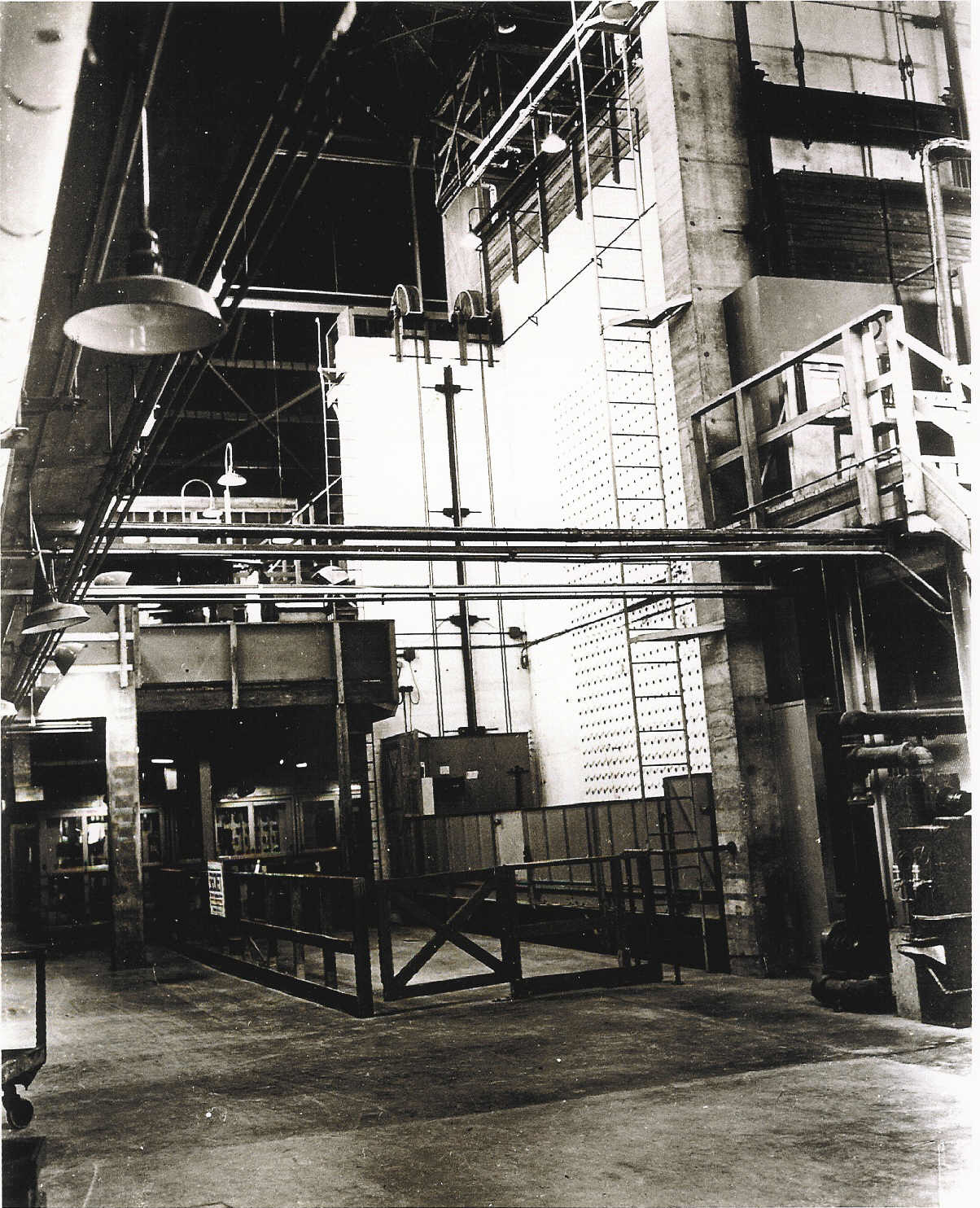The X-10 Graphite Reactor was the first reactor built after the successful experimental “Chicago Pile I” at the University of Chicago. On December 2, 1942, using a lattice of graphite blocks and uranium rods, Enrico Fermi proved that a nuclear chain reaction could be controlled. Scientists knew that it would only be a matter of time before the energy of the atom could be harnessed for a bomb.
The next step was to build a reactor to produce plutonium, a potential ingredient for an atomic weapon. Like enriched uranium, plutonium is unstable. A man-made element, plutonium was discovered by Glenn Seaborg and colleagues at the University of California at Berkeley in late1940.
The X-10 Graphite Reactor or “Clinton Pile” was a pilot plant for the full-scale plutonium production reactors that were being built at Hanford. DuPont was hired to work with the University of Chicago to design and build both the Oak Ridge and Hanford reactors.
Racing against time, DuPont decided to use air to cool the pilot reactor. Just ten months after construction began, the X-10 reactor went critical on November 4, 1943. A twenty-four foot graphite cube, workers loaded uranium-metal slugs into the 1,248 channels. Once irradiated in the reactor core, the slugs dropped into a pool of water. After the slugs had lost some radioactivity, the plutonium was extracted from the slugs in a remote-controlled separations plant.
While X-10 was still under construction, DuPont decided that water should be used as a coolant for the Hanford reactors. While it was not an exact prototype for the Hanford reactors, it did produce valuable samples of plutonium for the scientists at Los Alamos designing the bombs. In total, the X-10 graphite reactor cost $27 million to build and operate during the war years and employed 1,513 workers.
In 1946, X-10 began producing peacetime radioisotopes for use in industry, agriculture, medicine and research. The pile was permanently shut down in 1963 and designated a National Historic Landmark in 1966 and a National Historic Chemical Landmark in 2008. The reactor has also been recently renovated and is often included in tours provided by ORNL to visitors.




